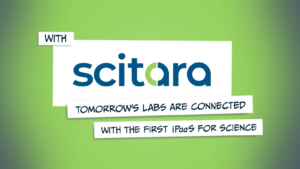At-a-Glance:
- Drawbacks of using Manual System in the Lab
- Advantages of implementing Automation in the Lab
- Scitara DLX™ for Lab Automation
The pharmaceutical industry is one of the last to fully adopt digitalization. There are several reasons behind this, including the sheer complexity of laboratory processes, the need for strict compliance and the difficulty of modifying a procedure after it has been established. When Covid-19 hit, the imperative to develop, manufacture and distribute a vaccine in record time caused the pharmaceutical industry to accelerate its stance on digitalization and use of technology to collect and analyze data in real time. In the pharmaceutical industry, digital transformation is assisting organizations in achieving greater transparency, better patient interaction and care, improved drug research, unparalleled cost-effectiveness, rebuilding their business models, and improving production processes.
Manual System Challenges
Inaccuracies in digital data can occur when humans manually enter data into a system. Manual data entry can result in transcription errors, preventing samples from being tested, or specimens from being tracked back to their original source. Data entry errors can have significant negative consequences for research outcomes. Simple data input errors, such as typing the wrong number, typing the same number again, or skipping a line, or manual transcription of data from a legacy device can lead to incorrect data analysis. Human error reduction is a key concern for life science firms, and many resources have been dedicated toward building internal procedures and processes to deal with human error reduction. In labs, the correlation between manual steps and human error results in higher operating and drug development expenses, longer drug development cycles, compliance issues and lower product quality. Given the possibility of human error, labs prioritize data integrity and adherence to rules and regulations.
Digitalization and automation can improve quality and compliance by minimizing manual errors and unpredictability, as well as enabling faster and more effective problem resolution. In many instances, such digitalization can reduce deviations while significantly improving cycle times. The cost savings from avoiding serious compliance concerns can be in the millions. The maintenance and assurance of data accuracy and reliability across processes is a critical aspect for labs to ensure data integrity.
Solution
Automation plays a key role in optimizing lab operation, efficiency, organization, standardization, validation, and quality. A variety of lab automation systems are rapidly evolving to provide improved hardware and software solutions to optimize laboratory efficiency. However, the complex parameters of the lab and automation systems must be considered to determine the best system for each given lab.
Scitara DLX Platform for Automation
The Scitara Digital Lab Exchange DLX™ platform, the first iPaaS for science, creates a comprehensive digital data exchange infrastructure that establishes a peer-to-peer network allowing access to all the laboratory’s instruments and resources. It streamlines the process of managing lab connectivity at the lab, site, and global level. Any device, instrument, application, informatics system, web service, or lab resource can connect to Scitara’s DLX platform through configuration and provisioning to an appropriate lab resource. The automation of workflows, task notifications, and data transmission using their revolutionary connection and orchestration technology drives accessibility and sharing of lab data across the company. This creates a true, multi-point data exchange, ensuring data integrity and compliance for data in flight.
The DLX platform provides multiple technologies enabling you to onboard new Connections in a fast and efficient way, laying the groundwork for automating data exchange between instruments and applications across the company.
The DLX Orchestration Engine then leverages Connections to orchestrate multi-point data exchange workflows that support individual or interconnected laboratory procedures to help achieve total workflow automation in the laboratory.
The DLX platform’s wide range of connection technology provides any combination of workflow orchestration required for the automation of most laboratory procedures. The Scitara Orchestration technology enables simple end-user task automation without requiring extensive programming skills. Furthermore, JavaScript is embedded into the orchestrating engine itself, allowing for script customization for more sophisticated actions.
The DLX infrastructure breaks through the barriers to achieve universal connectivity and digital data exchange within the lab. Implementation of Scitara DLX significantly lowers the risk of human error in the laboratory and makes it easier to connect lab processes and control devices remotely.
For Further Reference: Scitara DLX Improves Cycle Time Metrics
